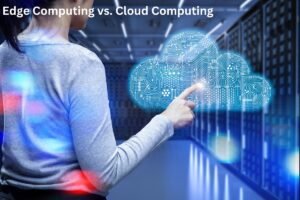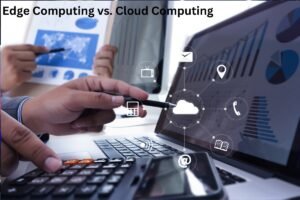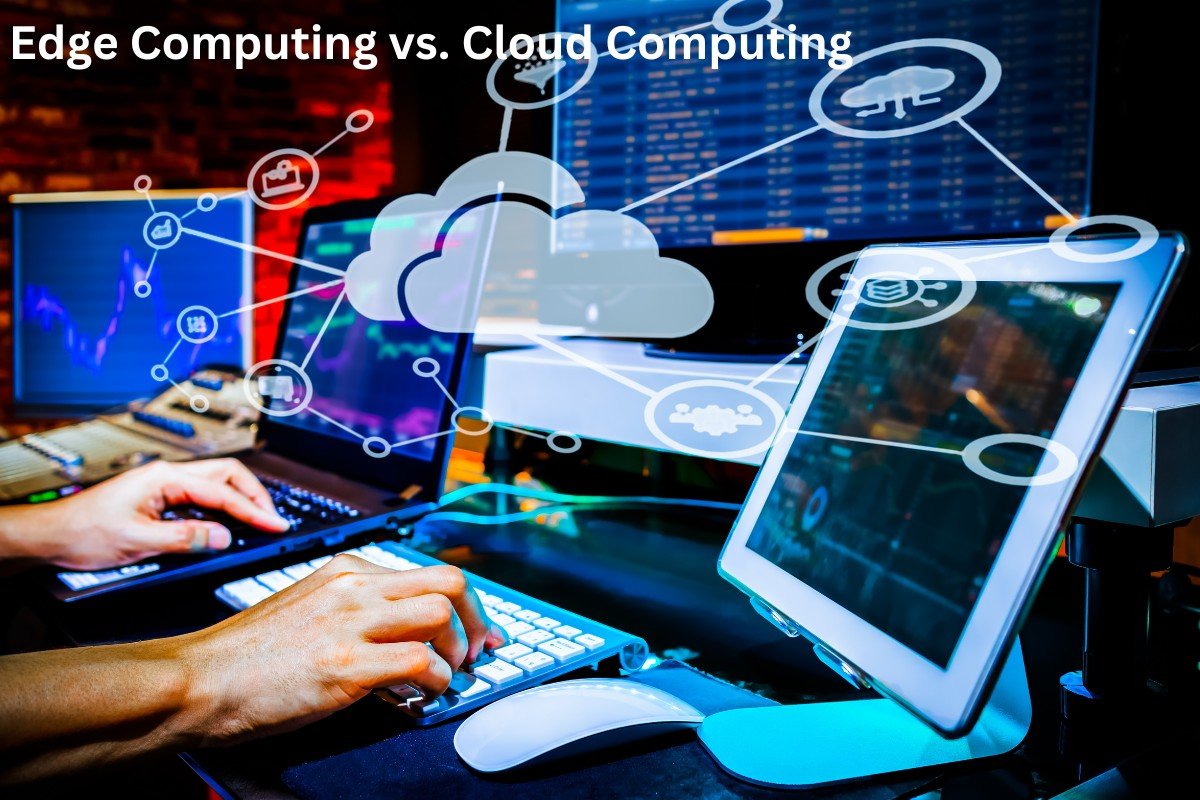Edge Computing vs. Cloud Computing:
In today’s digital age, where data is generated at an unprecedented rate, businesses and organizations are constantly seeking more efficient ways to process and manage their data. Two prominent paradigms that have emerged to address this need are edge computing and cloud computing. While both offer solutions for data processing and storage, they have distinct differences that cater to different requirements and scenarios.

Introduction to Edge Computing and Cloud Computing
Before delving into the comparison between edge computing and cloud computing, let’s first understand what each entails.
Understanding Edge Computing
Edge computing involves processing data near the source of data generation, rather than relying on a centralized data processing warehouse. It brings computation and data storage closer to the location where it is needed, thereby reducing latency and bandwidth usage.
Definition and Concept
Edge computing can be defined as a distributed computing paradigm that brings computation and data storage closer to the location where it is needed, improving response times and saving bandwidth.
Characteristics
- Proximity to data source
- Low latency
- Reduced bandwidth usage
- Decentralized architecture
Advantages
- Reduced latency: By processing data closer to its source, edge computing significantly reduces latency, making it ideal for applications requiring real-time processing.
- Bandwidth optimization: Edge computing minimizes the need to transfer large volumes of data over the network, thus optimizing bandwidth usage.
- Improved reliability: With decentralized architecture, edge computing offers improved reliability as it is less susceptible to single points of failure.
Challenges
- Management complexity: Managing a distributed network of edge devices can be complex and challenging.
- Security concerns: Edge devices may be more vulnerable to security threats compared to centralized cloud servers.
Understanding Cloud Computing
Cloud computing, on the other hand, involves the delivery of computing services—including servers, storage, databases, networking, software, and more—over the internet, also known as “the cloud.” It offers on-demand access to a shared pool of computing resources, which can be rapidly provisioned and released with minimal management effort.
Definition and Concept
Cloud computing refers to the delivery of computing services—including servers, storage, databases, networking, software, and more—over the internet, allowing users to access and utilize resources as needed.
Characteristics
- On-demand access
- Scalability
- Pay-as-you-go pricing model
- Resource pooling
Advantages
- Scalability: Cloud computing allows organizations to scale their computing resources up or down based on demand, ensuring optimal resource utilization.
- Cost-effectiveness: With a pay-as-you-go pricing model, cloud computing offers cost-effectiveness as organizations only pay for the resources they consume.
- Accessibility: Cloud services can be accessed from anywhere with an internet connection, providing flexibility and mobility.
Challenges
- Security and privacy concerns: Storing data in the cloud raises security and privacy concerns, as sensitive information may be vulnerable to breaches.
- Dependency on internet connectivity: Cloud services rely on internet connectivity, making them inaccessible in areas with poor or no internet connectivity.
Edge Computing vs. Cloud Computing: Key Differences

Now that we have a clear understanding of edge computing and cloud computing, let’s compare them based on several key factors.
Architecture
Edge computing follows a decentralized architecture, with computation and data storage distributed across various edge devices located near the data source. In contrast, cloud computing relies on centralized data centers located at remote locations, accessed over the internet.
Latency
Edge computing offers significantly lower latency compared to cloud computing since data processing occurs closer to the data source, reducing the time taken for data transmission.
Bandwidth
Edge computing minimizes bandwidth usage by processing data locally, whereas cloud computing may require large volumes of data to be transferred over the network, consuming more bandwidth.
Data Processing
Edge computing is well-suited for applications requiring real-time data processing, such as IoT devices and autonomous vehicles, where immediate action is essential. Cloud computing, on the other hand, may introduce latency due to data transmission over the internet.
Scalability
Cloud computing offers greater scalability compared to edge computing, as cloud services can quickly provision additional resources to meet changing demands. Edge computing may have limitations in scalability due to the finite resources available on edge devices.
Security
While both edge computing and cloud computing have security measures in place, edge devices may be more vulnerable to physical tampering and unauthorized access compared to centralized cloud servers, posing security challenges.
Conclusion
In conclusion, both edge computing and cloud computing offer unique solutions for processing and managing data, each with its own advantages and challenges. Edge computing excels in scenarios requiring low latency and real-time processing, while cloud computing provides scalability and accessibility. Understanding the differences between these two paradigms is essential for organizations to choose the right approach based on their specific requirements and use cases.
FAQs (Frequently Asked Questions)
- Is edge computing replacing cloud computing? Edge computing complements cloud computing by providing localized processing closer to the data source. While it may replace certain aspects of cloud computing in specific scenarios, they are not mutually exclusive.
- Which industries benefit most from edge computing? Industries such as healthcare, manufacturing, transportation, and telecommunications benefit significantly from edge computing due to their reliance on real-time data processing and low-latency applications.
- Can edge computing work without the cloud? Edge computing can operate independently without relying on the cloud for certain tasks. However, integrating edge computing with cloud services can enhance scalability and data analysis capabilities.
- How does edge computing improve IoT applications? Edge computing reduces latency in IoT applications by processing data locally, enabling faster response times and improved reliability for IoT devices.
- What are the security implications of edge computing? Edge computing introduces new security challenges, such as securing distributed edge devices and data transmission over unsecured networks. Implementing robust security measures is essential to mitigate these risks.
